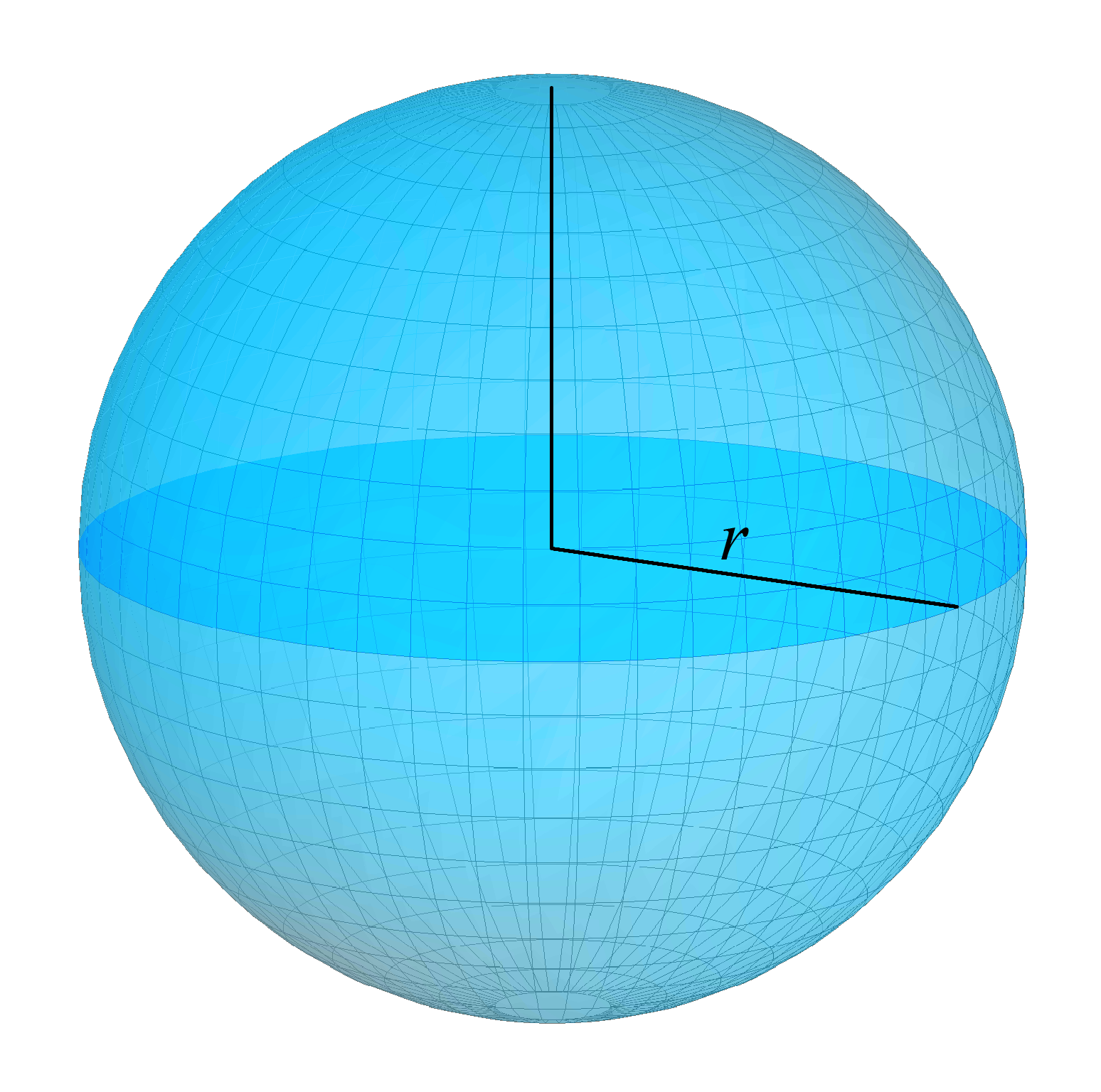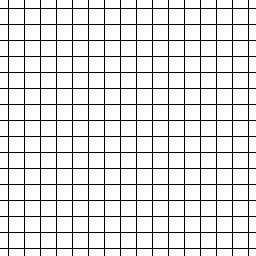|
Bishop–Gromov Inequality
In mathematics, the Bishop–Gromov inequality is a comparison theorem in Riemannian geometry, named after Richard L. Bishop and Mikhail Gromov. It is closely related to Myers' theorem, and is the key point in the proof of Gromov's compactness theorem. Statement Let M be a complete ''n''-dimensional Riemannian manifold whose Ricci curvature satisfies the lower bound : \mathrm \geq (n-1) K for a constant K\in \R. Let M_K^n be the complete ''n''-dimensional simply connected space of constant sectional curvature K (and hence of constant Ricci curvature (n-1)K); thus M_K^n is the ''n''-sphere of radius 1/\sqrt if K>0, or ''n''-dimensional Euclidean space if K=0, or an appropriately rescaled version of ''n''-dimensional hyperbolic space if K<0. Denote by the ball of radius ''r'' around a point ''p'', defined with respect to the [...More Info...] [...Related Items...] OR: [Wikipedia] [Google] [Baidu] |
Mathematics
Mathematics is a field of study that discovers and organizes methods, Mathematical theory, theories and theorems that are developed and Mathematical proof, proved for the needs of empirical sciences and mathematics itself. There are many areas of mathematics, which include number theory (the study of numbers), algebra (the study of formulas and related structures), geometry (the study of shapes and spaces that contain them), Mathematical analysis, analysis (the study of continuous changes), and set theory (presently used as a foundation for all mathematics). Mathematics involves the description and manipulation of mathematical object, abstract objects that consist of either abstraction (mathematics), abstractions from nature orin modern mathematicspurely abstract entities that are stipulated to have certain properties, called axioms. Mathematics uses pure reason to proof (mathematics), prove properties of objects, a ''proof'' consisting of a succession of applications of in ... [...More Info...] [...Related Items...] OR: [Wikipedia] [Google] [Baidu] |
Sphere
A sphere (from Ancient Greek, Greek , ) is a surface (mathematics), surface analogous to the circle, a curve. In solid geometry, a sphere is the Locus (mathematics), set of points that are all at the same distance from a given point in three-dimensional space.. That given point is the center (geometry), ''center'' of the sphere, and the distance is the sphere's ''radius''. The earliest known mentions of spheres appear in the work of the Greek mathematics, ancient Greek mathematicians. The sphere is a fundamental surface in many fields of mathematics. Spheres and nearly-spherical shapes also appear in nature and industry. Bubble (physics), Bubbles such as soap bubbles take a spherical shape in equilibrium. The Earth is spherical Earth, often approximated as a sphere in geography, and the celestial sphere is an important concept in astronomy. Manufactured items including pressure vessels and most curved mirrors and lenses are based on spheres. Spheres rolling, roll smoothly in ... [...More Info...] [...Related Items...] OR: [Wikipedia] [Google] [Baidu] |
Gromov's Inequality (other)
The following pages deal with inequalities due to Mikhail Gromov: * Bishop–Gromov inequality * Gromov's inequality for complex projective space * Gromov's systolic inequality for essential manifolds In the mathematical field of Riemannian geometry, M. Gromov's systolic inequality bounds the length of the shortest non-contractible loop on a Riemannian manifold in terms of the volume of the manifold. Gromov's systolic inequality was proved in ... * Lévy–Gromov inequality {{disambiguation ... [...More Info...] [...Related Items...] OR: [Wikipedia] [Google] [Baidu] |
Comparison Theorem
In mathematics, comparison theorems are theorems whose statement involves comparisons between various mathematical objects of the same type, and often occur in fields such as calculus, differential equations and Riemannian geometry. Differential equations In the theory of differential equations, comparison theorems assert particular properties of solutions of a differential equation (or of a system thereof), provided that an auxiliary equation/inequality (or a system thereof) possesses a certain property. Differential (or integral) inequalities, derived from differential (respectively, integral) equations by replacing the equality sign with an inequality sign, form a broad class of such auxiliary relations. One instance of such theorem was used by Aronson and Weinberger to characterize solutions of Fisher's equation, a reaction-diffusion equation. Other examples of comparison theorems include: * Chaplygin's theorem * Grönwall's inequality, and its various generalizations, prov ... [...More Info...] [...Related Items...] OR: [Wikipedia] [Google] [Baidu] |
Notices Of The American Mathematical Society
''Notices of the American Mathematical Society'' is the membership journal of the American Mathematical Society (AMS), published monthly except for the combined June/July issue. The first volume was published in 1953. Each issue of the magazine since January 1995 is available in its entirety on the journal web site. Articles are peer-reviewed by an editorial board of mathematical experts. Beginning with the January 2025 issue, the editor-in-chief is Mark C. Wilson, succeeding past editor Erica Flapan. The cover regularly features mathematical visualizations. The ''Notices'' is self-described to be the world's most widely read mathematical journal. As the membership journal of the American Mathematical Society, the ''Notices'' is sent to the approximately 30,000 AMS members worldwide, one-third of whom reside outside the United States. By publishing high-level exposition, the ''Notices'' provides opportunities for mathematicians to find out what is going on in the field. Each is ... [...More Info...] [...Related Items...] OR: [Wikipedia] [Google] [Baidu] |
Riemannian Manifold
In differential geometry, a Riemannian manifold is a geometric space on which many geometric notions such as distance, angles, length, volume, and curvature are defined. Euclidean space, the N-sphere, n-sphere, hyperbolic space, and smooth surfaces in three-dimensional space, such as ellipsoids and paraboloids, are all examples of Riemannian manifold, manifolds. Riemannian manifolds are named after German mathematician Bernhard Riemann, who first conceptualized them. Formally, a Riemannian metric (or just a metric) on a smooth manifold is a choice of inner product for each tangent space of the manifold. A Riemannian manifold is a smooth manifold together with a Riemannian metric. The techniques of differential and integral calculus are used to pull geometric data out of the Riemannian metric. For example, integration leads to the Riemannian distance function, whereas differentiation is used to define curvature and parallel transport. Any smooth surface in three-dimensional Eucl ... [...More Info...] [...Related Items...] OR: [Wikipedia] [Google] [Baidu] |
Hyperbolic Space
In mathematics, hyperbolic space of dimension ''n'' is the unique simply connected, ''n''-dimensional Riemannian manifold of constant sectional curvature equal to −1. It is homogeneous, and satisfies the stronger property of being a symmetric space. There are many ways to construct it as an open subset of \mathbb R^n with an explicitly written Riemannian metric; such constructions are referred to as models. Hyperbolic 2-space, H2, which was the first instance studied, is also called the hyperbolic plane. It is also sometimes referred to as Lobachevsky space or Bolyai–Lobachevsky space after the names of the author who first published on the topic of hyperbolic geometry. Sometimes the qualificative "real" is added to distinguish it from complex hyperbolic spaces. Hyperbolic space serves as the prototype of a Gromov hyperbolic space, which is a far-reaching notion including differential-geometric as well as more combinatorial spaces via a synthetic approach to negati ... [...More Info...] [...Related Items...] OR: [Wikipedia] [Google] [Baidu] |
Euclidean Space
Euclidean space is the fundamental space of geometry, intended to represent physical space. Originally, in Euclid's ''Elements'', it was the three-dimensional space of Euclidean geometry, but in modern mathematics there are ''Euclidean spaces'' of any positive integer dimension ''n'', which are called Euclidean ''n''-spaces when one wants to specify their dimension. For ''n'' equal to one or two, they are commonly called respectively Euclidean lines and Euclidean planes. The qualifier "Euclidean" is used to distinguish Euclidean spaces from other spaces that were later considered in physics and modern mathematics. Ancient Greek geometers introduced Euclidean space for modeling the physical space. Their work was collected by the ancient Greek mathematician Euclid in his ''Elements'', with the great innovation of '' proving'' all properties of the space as theorems, by starting from a few fundamental properties, called '' postulates'', which either were considered as evid ... [...More Info...] [...Related Items...] OR: [Wikipedia] [Google] [Baidu] |
Sectional Curvature
In Riemannian geometry, the sectional curvature is one of the ways to describe the curvature of Riemannian manifolds. The sectional curvature ''K''(σ''p'') depends on a two-dimensional linear subspace σ''p'' of the tangent space at a point ''p'' of the manifold. It can be defined geometrically as the Gaussian curvature of the surface (topology), surface which has the plane σ''p'' as a tangent plane at ''p'', obtained from geodesics which start at ''p'' in the directions of σ''p'' (in other words, the image of σ''p'' under the exponential map (Riemannian geometry), exponential map at ''p''). The sectional curvature is a real-valued function on the 2-Grassmannian fiber bundle, bundle over the manifold. The sectional curvature determines the Riemann curvature tensor, Riemann curvature tensor completely. Definition Given a Riemannian manifold and two linearly independent tangent vectors at the same point, ''u'' and ''v'', we can define :K(u,v)= Here ''R' ... [...More Info...] [...Related Items...] OR: [Wikipedia] [Google] [Baidu] |
Comparison Theorem
In mathematics, comparison theorems are theorems whose statement involves comparisons between various mathematical objects of the same type, and often occur in fields such as calculus, differential equations and Riemannian geometry. Differential equations In the theory of differential equations, comparison theorems assert particular properties of solutions of a differential equation (or of a system thereof), provided that an auxiliary equation/inequality (or a system thereof) possesses a certain property. Differential (or integral) inequalities, derived from differential (respectively, integral) equations by replacing the equality sign with an inequality sign, form a broad class of such auxiliary relations. One instance of such theorem was used by Aronson and Weinberger to characterize solutions of Fisher's equation, a reaction-diffusion equation. Other examples of comparison theorems include: * Chaplygin's theorem * Grönwall's inequality, and its various generalizations, prov ... [...More Info...] [...Related Items...] OR: [Wikipedia] [Google] [Baidu] |
Simply Connected
In topology, a topological space is called simply connected (or 1-connected, or 1-simply connected) if it is path-connected and every Path (topology), path between two points can be continuously transformed into any other such path while preserving the two endpoints in question. Intuitively, this corresponds to a space that has no disjoint parts and no holes that go completely through it, because two paths going around different sides of such a hole cannot be continuously transformed into each other. The fundamental group of a topological space is an indicator of the failure for the space to be simply connected: a path-connected topological space is simply connected if and only if its fundamental group is trivial. Definition and equivalent formulations A topological space X is called if it is path-connected and any Loop (topology), loop in X defined by f : S^1 \to X can be contracted to a point: there exists a continuous map F : D^2 \to X such that F restricted to S^1 is f. Here, ... [...More Info...] [...Related Items...] OR: [Wikipedia] [Google] [Baidu] |
Ricci Curvature
In differential geometry, the Ricci curvature tensor, named after Gregorio Ricci-Curbastro, is a geometric object which is determined by a choice of Riemannian or pseudo-Riemannian metric on a manifold. It can be considered, broadly, as a measure of the degree to which the geometry of a given metric tensor differs locally from that of ordinary Euclidean space or pseudo-Euclidean space. The Ricci tensor can be characterized by measurement of how a shape is deformed as one moves along geodesics in the space. In general relativity, which involves the pseudo-Riemannian setting, this is reflected by the presence of the Ricci tensor in the Raychaudhuri equation. Partly for this reason, the Einstein field equations propose that spacetime can be described by a pseudo-Riemannian metric, with a strikingly simple relationship between the Ricci tensor and the matter content of the universe. Like the metric tensor, the Ricci tensor assigns to each tangent space of the manifold a symmetric bi ... [...More Info...] [...Related Items...] OR: [Wikipedia] [Google] [Baidu] |



